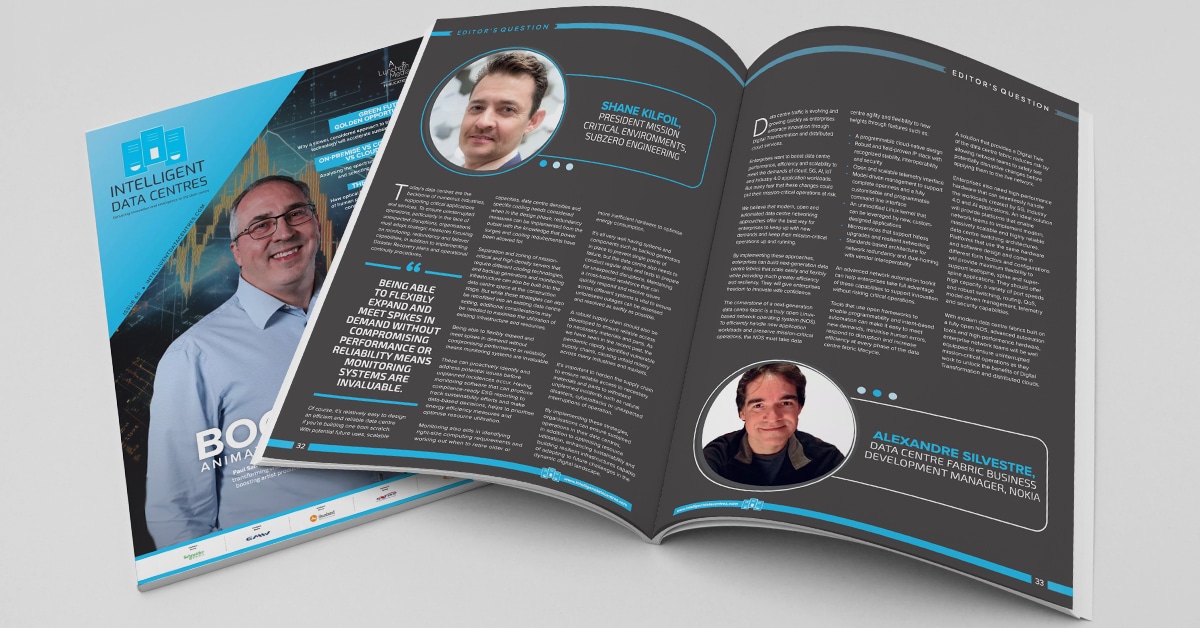Interview with Subzero Engineering President, Shane Kilfoil
Published in Data Center Intelligence Magazine, Issue 60, page 32

Today’s data centers are the backbone of numerous industries, supporting critical applications and services. To ensure uninterrupted operations, particularly in the face of unexpected disruptions, organizations must adopt strategic measures focusing on monitoring, redundancy and failover capabilities, in addition to implementing Disaster Recovery plans and operational continuity procedures.
Of course, it’s relatively easy to design an efficient and reliable data center if you’re building one from scratch. With potential future uses, scalable capacities, data center densities and specific cooling needs considered when in the design phase, redundancy measures can be implemented from the outset with the knowledge that power surges and cooling requirements have been allowed for.
Separation and zoning of mission-critical and high-density servers that require different cooling technologies, and backup generators and monitoring infrastructure can also be built into the data center space at the construction stage. But while these strategies can also be retrofitted into an existing data center setting, additional considerations may be needed to maximize the utilization of existing infrastructure and resources.
Being able to flexibly expand and meet spikes in demand without compromising performance or reliability means monitoring systems are invaluable.
Being able to flexibly expand and meet spikes in demand without compromising performance or reliability means monitoring systems are invaluable.
These can proactively identify and address potential issues before unplanned incidences occur. Having monitoring software that can produce compliance-ready ESG reporting to track sustainability efforts and make data-based decisions, helps to prioritize energy efficiency measures and optimize resource utilization.
Monitoring also aids in identifying right-size computing requirements and working out when to retire older or more inefficient hardware to optimize energy consumption.
It’s all very well having systems and components such as backup generators in place to prevent single points of failure, but the data center also needs to conduct regular drills and tests to prepare for unexpected disruptions. Maintaining a cross-trained workforce that can quickly respond and resolve issues across different systems is vital to ensure unforeseen outages can be assessed and resolved as swiftly as possible.
A robust supply chain should also be developed to ensure reliable access to necessary materials and parts. As we have seen in the recent past, the pandemic rapidly identified vulnerable supply chains, causing untold misery across many industries and markets.
It’s important to harden the supply chain to ensure reliable access to necessary materials and parts to withstand unplanned incidents such as natural disasters, cyberattacks or unexpected interruptions of operation.
By implementing these strategies, organizations can ensure sustained operations in their data centers, in addition to optimizing resource utilization, enhancing sustainability and building resilient infrastructures capable of adapting to future challenges in the dynamic digital landscape.




